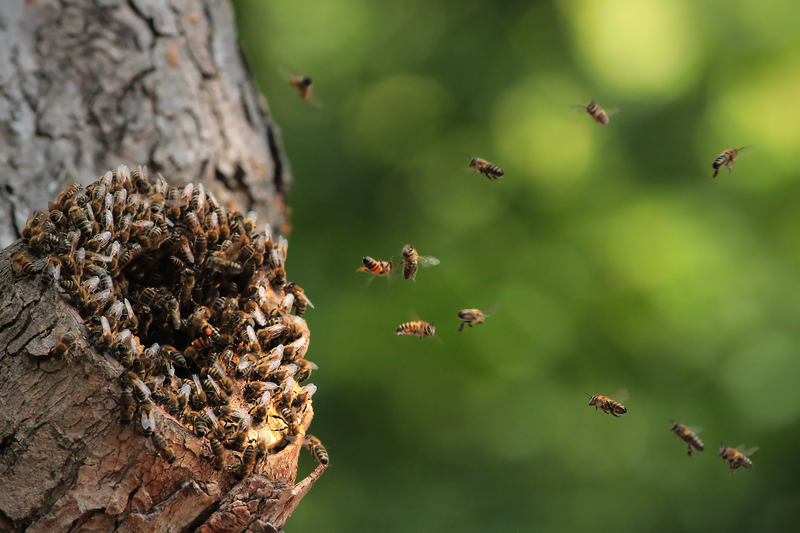Cultivating Calm Amidst Strong Winds in the Garden
Posted on 08/09/2025
Introduction: Achieving Serenity in a Windy Garden
The sensation of a fresh breeze weaving through verdant foliage is enchanting--yet, for many gardeners, strong winds bring anxiety, not tranquility. High-speed gusts can damage plants, wear down soil, and upset the balance of any outdoor sanctuary. Nonetheless, cultivating calm amidst strong winds in the garden is not only possible but can be a rewarding transformation. This article will provide a comprehensive, step-by-step guide on creating a peaceful, wind-resilient landscape where both plants and gardener can thrive.

Understanding Wind: The First Step to Cultivating Calm
Before designing a resilient and tranquil space, it's vital to understand how wind interacts with your garden. Wind speed, direction, frequency, and topography collectively shape your garden's microclimate.
Why Wind Matters in Garden Design
- Physical Stress on Plants: Strong winds can break branches, snap stems, and cause foliage desiccation.
- Moisture Loss: Wind accelerates evaporation from soil and plant surfaces, requiring more frequent watering.
- Soil Erosion: Exposed beds risk losing nutrients and structure under persistent gusts.
- Pollen and Seed Dispersal: While beneficial for some species, misdirected wind can prevent successful pollination or cause unwanted spread.
Understanding these dynamics is central to cultivating calm amid strong winds in the garden. From here, you can make strategic choices for landscaping, plant selection, and maintenance.
Site Assessment: The Foundation of a Wind-Calm Refuge
A thorough site assessment will help identify high-risk areas and calm pockets, guiding your wind-mitigation strategies.
How to Assess Wind Exposure in Your Garden
- Observe Local Patterns: Take note of where wind enters and exits your garden throughout different seasons and times of day.
- Identify Vulnerable Zones: Open corners, hilltops, and gaps between buildings often experience the most intense gusts.
- Existing Plant Performance: Notice if certain plants lean or sustain more damage than others--this provides clues about prevailing winds.
- Neighboring Structures: Fences, houses, sheds, and natural features (like large trees or hills) can provide shelter or funnel wind in unexpected ways.
With this knowledge in hand, you're ready to cultivate calm in your windy garden through targeted design and planting choices.
Design Strategies for Wind-Resilient, Serene Gardens
Design plays a pivotal role in creating tranquility amidst strong winds in the garden. The goal is to reduce gusts and turbulence, slow the wind, and establish zones of calm where plants--and people--can relax.
Windbreaks: Your First Line of Defense
- Living Windbreaks: Hedges of evergreen or dense deciduous shrubs can absorb and disperse wind energy. Examples include yew, privet, holly, and viburnum.
- Staggered Planting: Designing windbreaks in staggered rows or using a mix of plant heights increases their effectiveness.
- Hardscaping Features: Fences, trellises, or lattices with slight permeability reduce wind without creating disruptive turbulence (which solid barriers can cause).
- Natural Barriers: Strategic placement of boulders, berms, or terraces can also shape wind flow and encourage pockets of stillness.
Zoning: Creating Microclimates of Calm
Divide your garden into distinct zones--each designed with wind in mind:
- Sheltered Seating Areas: Use windbreaks, walls, or dense shrubbery to create cozy nooks for rest and contemplation.
- Protect Sensitive Species: Place delicate or tender plants in the calmer, innermost areas of the garden.
- Wild Spaces: Devote windier fringes to hardy natives and ornamental grasses that thrive despite exposure.
These design choices support not only calm within the garden but also the vitality and resilience of your treasured plants.
Plant Selection: Best Species for Windy Gardens
Selecting the right plants is crucial when cultivating serenity amidst relentless winds. Hardy, flexible species thrive where others may falter.
Top Trees and Shrubs for Windbreaks
- Evergreen Options: Scots pine, Austrian pine, Eastern red cedar, and Leyland cypress handle wind while maintaining year-round shelter.
- Deciduous Choices: Hornbeam, hawthorn, osage orange--though their winter skeletons allow some wind to pass, they provide excellent summer protection.
- Tough Shrubs: Sea buckthorn, Elaeagnus, black currant, and rugosa roses combine resilience with beauty and wildlife value.
Resilient Perennials and Grasses
- Ornamental Grasses: Molinia, Calamagrostis, Miscanthus bend gracefully and create soothing movement even in strong breezes.
- Perennial Flowers: Echinacea, yarrow, lavender, Russian sage and sedum offer color, scent, and robustness.
- Wind-Tolerant Groundcovers: Thyme, creeping juniper, and vinca bind the soil and slow wind at ground level.
Selecting a harmonious blend of these resilient species ensures your garden's beauty and serenity continue year-round, no matter the weather.
Soil Care and Mulching: Anchoring Calmness in the Garden
Strong winds dry and erode soil--threatening plant health and destabilizing the landscape. Thoughtful soil care is fundamental to maintaining calm.
Soil Stabilization Tactics
- Dense Planting: Crowd beds with low-growing, wind-resistant groundcovers and perennials to shield soil from direct exposure.
- Mulching: Use a thick, organic mulch layer (such as bark, woodchips, or compost) to lock in moisture, suppress erosion, and keep the ecosystem thriving.
- Terracing & Swales: On slopes, terraces or swales break the force of downhill wind, slow water runoff, and create calmer microclimates.
- Regular Watering: Even in windy gardens, keeping soil moist (without overwatering) helps prevent plants from becoming stressed or brittle.
Garden Structures: Enhancing Calm with Design Elements
Purpose-built and decorative structures can be essential allies in cultivating calm amidst strong winds.
Useful Structures for Wind Reduction and Tranquility
- Lattice Screens: Semi-permeable panels filter wind, offering significant protection while retaining light and visibility.
- Arbours and Pergolas: These create pockets of stillness and can be planted with climbers for additional shelter and beauty.
- Stone Walls & Fences: Solid structures should include some gaps or airflow at the base to avoid wind tunnels or excessive turbulence.
- Water Features: Fountains or ponds not only muffle harsh wind noise but introduce calming sounds that enhance serenity.
Wellness in the Wind: Nurturing Calm Beyond the Plants
While windproofing your garden secures the landscape, cultivating calm also means nurturing your own sense of peace. Embrace mindful gardening practices and design features that transform the wind into an ally, not an adversary.
Mindful Engagement with the Wind
- Plant for Movement: Incorporate grasses, bamboo, and tall perennials whose swaying forms transform wind from a threat to a source of beauty and sound.
- Windchimes and Sculpture: Use garden art that celebrates the wind's presence, turning breezes into melodic or visual experiences.
- Seasonal Adjustments: Accept that some beds or features may change through the year as wind patterns shift. Adapt your garden routine to new rhythms.
- Seating Areas: Place benches, hammocks, or meditation spots in the most peaceful, sheltered locations. Facing away from prevailing winds can enhance comfort.
The act of tending a windy garden can itself become a meditation--reminding you of nature's power, resilience, and constant renewal.

Maintenance Tips: Ensuring Ongoing Calm in Wind-Prone Gardens
Establishing a wind-resilient garden is just the beginning. Consistent upkeep is necessary to preserve both calm and beauty amidst the elements.
Proactive Maintenance for Peaceful Gardens
- Inspect Windbreaks Regularly: Prune damaged branches, clear debris, and fill gaps in hedges to maintain consistent shelter.
- Replenish Mulch Annually: Keep your soil covered, moist, and protected from eroding gusts.
- Support Vulnerable Plants: Use discreet staking, cages, or ties for top-heavy or young specimens during peak wind seasons.
- Monitor for Wind Burn: Remove or trim unsightly scorched leaves to encourage new growth and reduce plant stress.
- Seasonal Reassessment: Revisit your garden's wind dynamics each year and adjust plantings or structures to address new challenges.
Conclusion: Transforming Challenge into Serenity
Cultivating calm amidst strong winds in the garden is ultimately a journey of collaboration with nature. By understanding wind's patterns, choosing resilient plants, implementing smart design, and approaching maintenance mindfully, you can create an oasis where serenity reigns--no matter the breeze.
Embrace the challenge and let the rhythm of the wind become a reminder of your garden's strength and beauty. With time, dedication, and a few thoughtful interventions, your outdoor haven will offer both shelter and inspiration, proving that it's possible to cultivate tranquility even in the heart of the storm.



